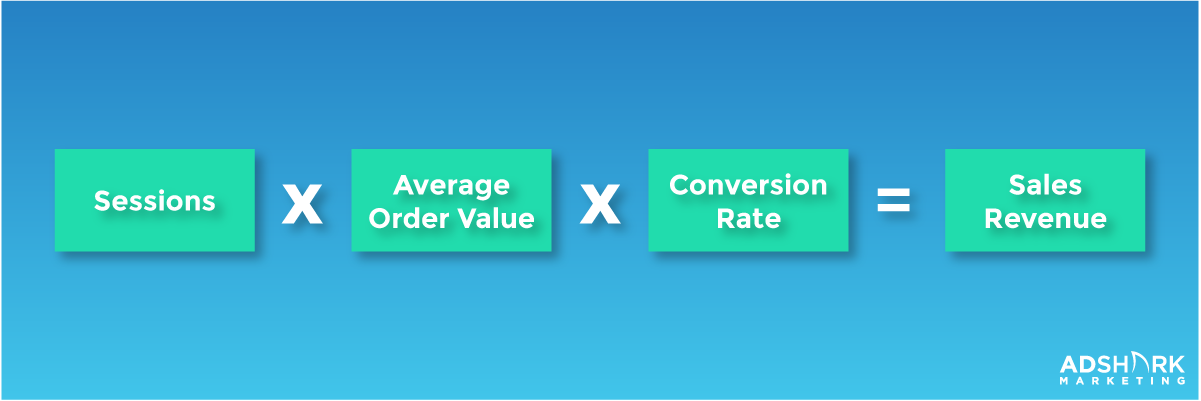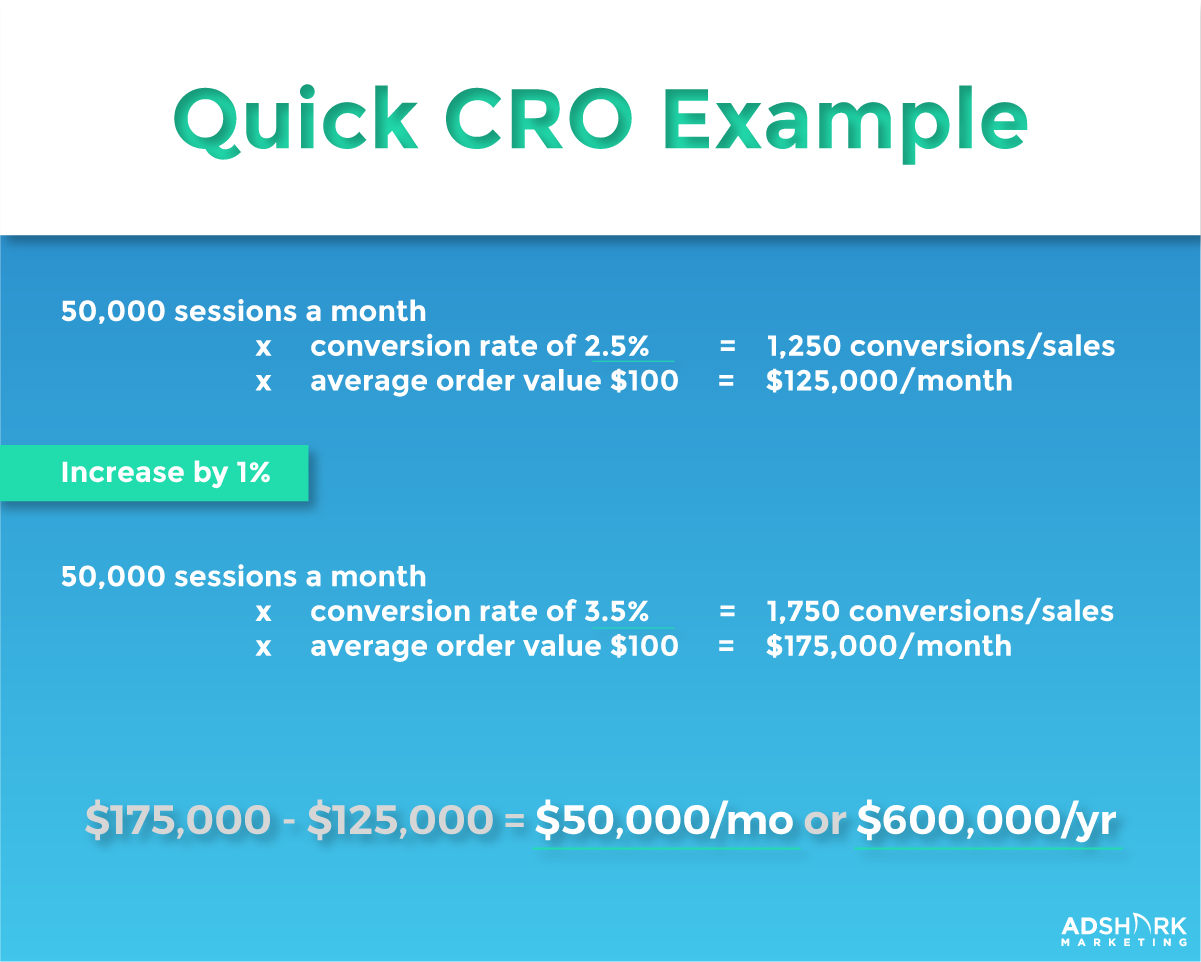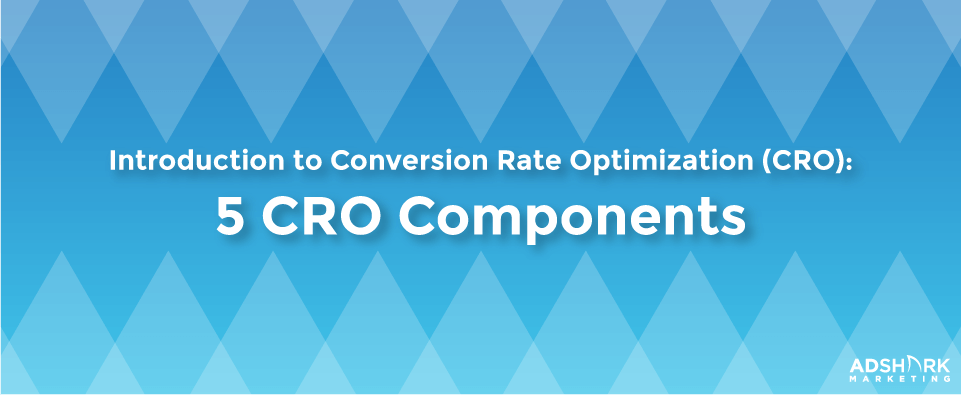Introduction to Conversion Rate Optimization (CRO): 5 CRO Components
Conversion Rate Optimization (CRO) is the process of improving your website to increase the percentage of visitors that ‘convert’ into a customer. This is usually achieved through implementing best practices and split testing to determine the best experience for your website visitors. In this post, we cover the 5 fundamental points to consider for CRO.
1.) What is CRO?
Conversion Rate Optimization is the process and method of making improvements to your website with the goal of increasing the percentage of visitors that convert. Converting here refers to the action you want a visitor to take while on your website, such as submitting a contact form, registering for a newsletter, downloading a white paper (PDF), registering for a webinar or event, completing a purchase and many more other conversion options available.
At the fundamental core of CRO is determining what visitors on your website are looking to accomplish and giving that to them as quickly and easy as possible. This could be improving your call-to-actions or simply adding a call-to-action on the page, to improving the usability of the page by decluttering it and not making it unnecessarily complicated. You are simplifying the conversion funnel for the visitor to better increase the chances of a conversion and improving your CRO. If all other metrics remain constant and you increase one of the three metrics, sales revenue should increase as well.
Increasing Sales for E-Commerce Formula

Sessions:
A group of interactions one user takes within a given time frame on your website that was directed to your website from traffic sources like search engines, PPC, social media and external links. In order to increase the number of website sessions, one can implement Search Engine Optimization (SEO) techniques, Pay-Per-Click Advertising, Social Media strategies and more.
Average Order Value:
The average dollar amount of each order in your company. This metric can be achieved by simply dividing total website revenue by the total number of orders. You can increase average order value through upselling, cross-selling, free shipping based on order value as well as other techniques.
Conversion Rate:
Total Conversions (visitors that performed the action you wanted them to make on your website) divided by the total number of website sessions. Increasing conversion rate is obviously done through conversion rate optimization and A/B or multivariate testing.
2.) Is CRO a big deal?
What if somebody told you that you could increase e-commerce sales by $50,000 more per month, or essentially $600,000 more per year by just increasing conversion rate by 1%? Would you be interested?
The “Rate” in Conversion Rate Optimization is based on your Total Conversions (visitors that performed the action you wanted them to make on your website) divided by the total number of website sessions (not unique visitors) to your site. For example, a site with 1000 visitors and 10 conversions, has a Conversion Rate of 1%.
The below graphic shows 1% increase in conversions based on 50,000 monthly sessions and $100 in average order value.

Did you notice anything in that calculation? The number of visitors per month didn’t change from 50,000. But, this company generated more sales with the same amount of traffic by just implementing CRO techniques and best practices into their website. Imagine the possibilities if the monthly traffic were to increase for this company’s website?
As you can see CRO can make a big impact!

3.) Why does it matter?
The reason CRO matters is because it is about maximizing your revenue from your current website traffic. Therefore, the biggest factor for spending all this time and money is that CRO essentially helps maximize revenue and increases your Return on Investment (ROI). With a higher conversion rate, your customer acquisition costs are lowered and you pay-per-click campaigns can be more profitable and more competitive.
CRO can have a major impact on your cost-per-acquisition (CPA) or the cost of each new customer. Your CPA could be cut in half if you doubled conversion rates. This means if you are currently spending $4 to acquire each new customer when you implement CRO strategies to your site and double your conversion rate, your CPA cost would decrease to $2 and total revenue and profit margin would increase. That’s a big difference!
There are unrelated benefits from implementing CRO into your website as well. These benefits could be taking customers or traffic away from your competition, improving your brand perception in the market, and a better chance of more returning customers. All of these benefits from CRO could mean an increase in revenue and possibly extra funds to invest back into your website. You could either pocket the difference or invest in more CRO to the specific areas or pages on your website that are providing you the most conversions, to increase your revenue even further!
4.) Online consumers are impatient
The consumer behavior of online users is quite different than in person or via brick and mortar retail stores. Online visitors want to obtain the information they are seeking as fast as possible. Delivering that information to them as efficiently and quickly as possible removes conversions barriers that may discourage them from leaving your website and not converting. The worst case scenario is for a visitor to get frustrated and go to a competitor’s website and purchase there instead. By delivering your website visitors a user-friendly and intuitive experience your visitors will be more likely to purchase from you and return again.

5.) Conversion funnel barriers
In the world of digital marketing, especially when referring to CRO, the industry uses the term of Conversion Funnel. This term helps to describe the process or ‘steps’ that are taken by a visitor to complete a conversion on your site and become your customer! Hopefully as a lifetime customer. Therefore, the easier, or fewer steps you make the conversion funnel process for the visitors of your site, the more conversions you should achieve.
There are several items you can test on your website that can be conversion funnel barriers, from usability or navigational, call to actions (CTA’s), site security, content or copy, value proposition, images, colors and even form fields. However, these provided examples are by no means the comprehensive list of everything that can be tested for conversion funnel barriers and increasing CRO. Each website presents a different challenge and requires different testing, which is accomplished by A/B Testing.
In conclusion
CRO is not as simple as it sounds, and don’t expect overnight success with CRO. It takes investment of time, testing and commitment to achieve results in CRO. It can take a lot of trial and error before seeing a return on your investment. Even if you were able to get a couple of CRO improvements over a year’s time and that increases your conversions by even a small percentage of the same traffic, it will still positively impact the bottom line.
Takeaways
1. CRO makes improvements to your site to increase conversion rate.
2. Small increases in conversion rate can make a big impact.
3. CRO can increase your ROI and lower CPA, which can help maximize your ad spend!
4. Your visitors are the boss! Make decisions based on their activity.
5. Simplify your conversion funnel.
Ready To Grow?
Let's Talk!


